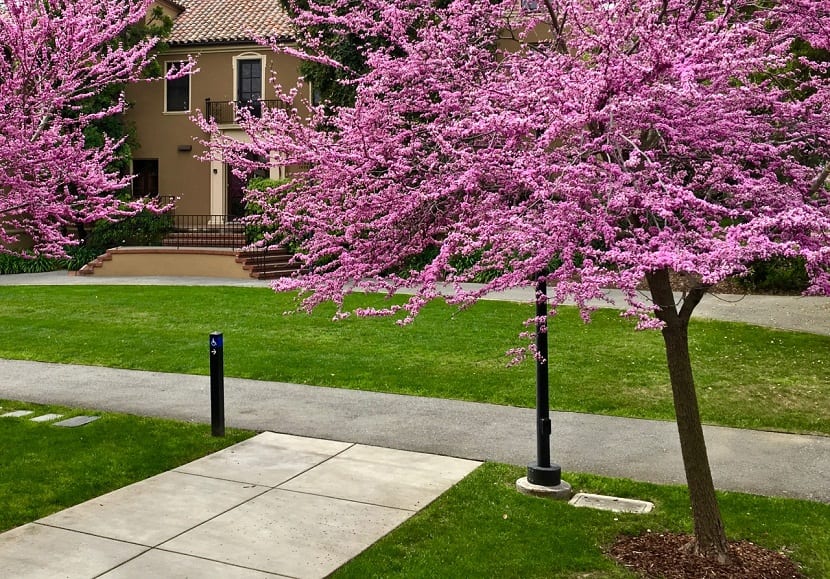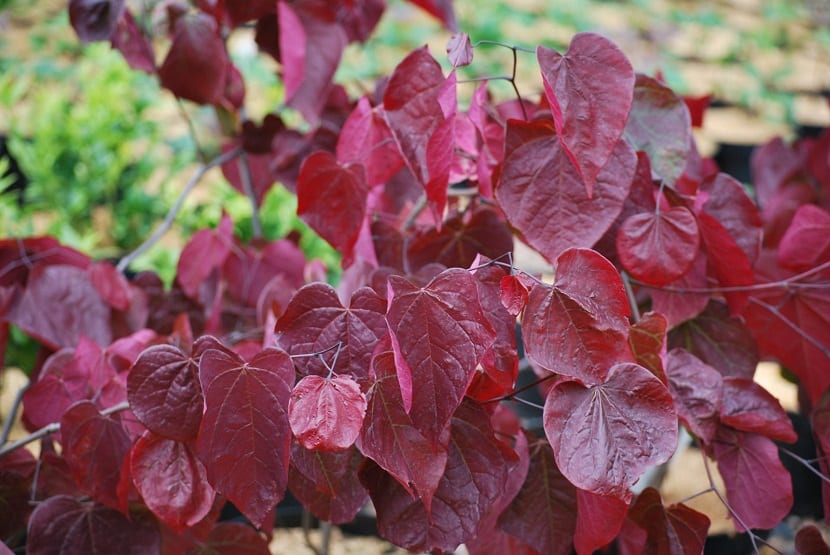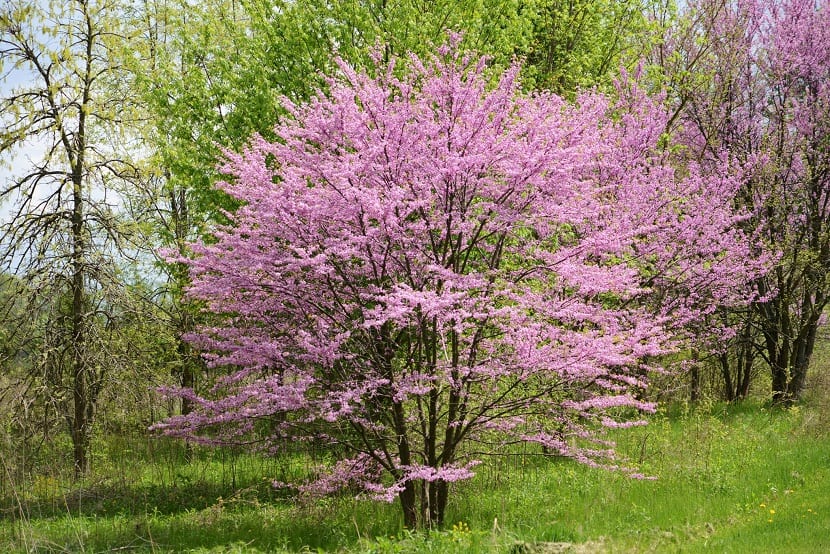
El cercis canadensis It is very striking for its abundant and delicate pink flowers. During the months of April and May it offers a beautiful spring show that resembles an illustration from a fairy tale. These easy-to-grow and maintain trees offer excellent landscaping to behold.
Being a shrub or small tree is simple and very noble care. The structure of the branches and the shape of the leaves makes it combine perfectly with temperate climates. This small tree is ideal for growing north of the equator.
Origin and characteristics of Cercis Canadensis

El cercis canadensis It is a species of tree in the Fabaceae family. The place of origin of this species is Eastern North America. It ranges from Ontario in Canada to Florida in the United States, even species are known to the east of Mexico.
This tree also goes by the names of Canadian redbud, eastern redbud, and judas tree. The word Cercis has its origin in ancient Greek whose meaning is redbud. Canadensis is the epithet that obviously refers to where it comes from, Canada.
Features
This is a small tree or large shrub that can grow to 6 to 9 meters tall. Its branches spread between 8 and 10 meters and at ten years of age it can be approximately five meters tall with a trunk with twisted characteristics and dark bark. The branches are spread in a zigzag and are thin black in color.
The stem and branches go through a range of chestnut, reddish, brown and black colors depending on the maturation of the plant. The leaves are heart-shaped, 7 to 12 cm broad. The texture is paper thin with hairy, while they are young, when fully developed they are smooth dark green. In autumn the color of the leaves is light yellow and bright.
The flowers of this tree are very showy, their color is magenta pink and even there are white, violet and lavender. They appear in the form of clusters of four or eight flowers between March and May.
The flowers have five petals with a bell-shaped dark red calyx. It has ten stamens and the pistil is a superior ovary that is pollinated by long-tongued bees. The fruit is small and flat that contains small elliptical seeds 6 mm brown in color and mature between August and October.
Farming
La cercis canadensis is a simple tree or shrub to plant and maintain. The first thing to do is find a good location for them. Its adaptability allows it to tolerate direct sun especially during winter and light shade is very good in summer.
The younger the tree, the easier it will be to transplant it. It is preferable to acquire it in a nursery located in the same area where it will be planted since will be acclimated to the conditions. Cercis prefers loose, well-draining soils, so sand or coarse grains can be added. Fertilizer is not necessary.
The next step is to dig a hole four times the diameter of the root, the depth of which is equal to the height of the root. Then the tree should be placed as upright as possibleBy adding a little soil and then a lot of water, after the soil has absorbed the water, the rest of the soil is placed. Finally, it is watered again and a mulch that can be bark chips is placed to retain moisture.
Maintenance

It is important to ensure that the roots are kept moist and drained. It can tolerate droughts, but for very short periods. Pruning is done in late fall or late spring when I no longer have flowers. Diseased wood, old branches and those that are growing interwoven or too bent are eliminated. Never prune more than 25% of the tree.
The judas tree does not require fertilizers because this tree can absorb nitrogen on its own. If you want to fertilize, you should use a product with a high content of phosphorus and potassium and slow release, applying only once before the growing season.